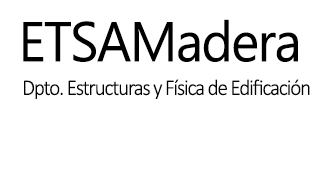
Abstract
Eucalyptus globulus L. is a hardwood species with high mechanical properties and great potential for engineered timber products. In the development of glued laminated products using high density wood species such as eucalyptus, bonded joints (e.g. fingerjoints) could be a weak point and therefore require special analysis. Numerical cohesive zone models in the framework of fracture mechanics can be applied to accurately simulate the brittle failure behaviour of such bonded joints. These models require assuming a cohesive law that relates cohesive forces and displacements ahead of the crack tip to predict the crack growth along a fracture process zone. In the present research, the fracture cohesive laws in mode I loading of Eucalyptus globulus L. bonded joints using one-component polyurethane adhesive (1C-PUR) are directly identified by coupling Double Cantilever Beam tests (DCB) with full-field displacements at the crack tip (w) measured by Digital Image Correlation (DIC). The Compliance-Based Beam Method (CBBM) is applied as data reduction scheme to evaluate the strain energy release rate (G) from the Resistance-curves of the specimens considering an equivalent crack length. Cohesive laws are determined by fitting a logistic function to the experimental data curve (G-w). It is found that that eucalyptus bonded joints have high values for mode I fracture properties, in the same range of those obtained for eucalyptus solid wood in previous research by the authors.
DOI: 10.1016/j.prostr.2022.01.114

